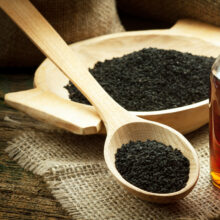Are All Calories Created Equal?
- Published: Wednesday, May 13th 2015
- in Nutrition
by Genevieve Nutting
It’s that time of day at the office where your belly starts rumbling and you begin to crash. You walk to grab your chicken wrap that you packed this morning with every intention of eating clean and healthy for the day when you notice slices of vanilla bean cake with luscious chocolate frosting on top. You look it up on your calorie counter and see that the cake has 235 calories in each slice, a little less than the chicken wrap you brought for lunch. What harm can it do then if you’re consuming less calories by going with the chocolate cake, after all isn’t every calorie treated equally?
Kind of. Calories are stored forms of energy in food, that when consumed the body can utilize to continue functioning and keep our metabolism going. At the end of the day, to maintain weight you want to essentially take in no more calories than you burn throughout the day. But if you’re looking for weight loss, your total calorie expenditure needs to be higher than your calorie intake. In that sense, a calorie is a calorie. Seems simple on paper, right? However, different calories provide diverse functions for your body and it’s how the body employs them that differentiates them.
What kinds of calories are there?
Let’s break down the chocolate cake verses the wrap. The cake in all its beautiful glory consists of roughly 35g of carbs, 10g of fat and 2g of protein. We won’t even get started on the 25 to 50g of sugar that can be found in a slice of cake, already passing your daily intake of no more than 24g of sugar if you’re a woman, or 36g for men. That means 57 percent of your calories are coming from carbohydrates, 39 percent from fat, and 4 percent from proteins.
In comparison to your chicken wrap which is 300 calories and contains 28g of carbs, 11g of fat, and 17g of protein where 39 percent of your calories are from carbs, 36 percent from fat, and 25 percent from proteins.
Starting to think twice about going for that slice of cake? Let’s break down those numbers and see how calories from carbohydrates, proteins, and fats are used differently.
Carbohydrates – I tell my clients looking to maintain or engage in healthy weight loss to aim for 40 to 50 percent (or roughly 150g as part of a 1500 calories-a-day diet) of their calories to come from complex carbs. That’s right, carbs are good as they provide us with energy, brain function, and aid in digestion. Look for leafy greens, fresh fruits, and whole grains as opposed to refined grains and sweets.
Fats – Fats do not make you fat! Aim for 20 to 30 percent (roughly 45g) to come from omega-3 fatty acids, monounsaturated, and polyunsaturated fats such as avocados, white fish, seeds, nuts, and plant-based oils. Fats, when consumed in moderation, aid in brain activity, vitamin absorption, a healthy heart, hair, skin, and nails.
Proteins – The building blocks of proper development and growth in the body and also satiety during meals. Look for 20 to 30 percent (roughly 100g) of your calories to come from lean proteins including chicken, turkey, egg whites, legumes, nuts, and dairy.
This breakdown explains why just 20 minutes after consuming that delectable piece of cake you find yourself coming down off your sugar high in a slump and craving more sugar. Next time, go for the chicken wrap to be energize and more productive, uplifted, and rejuvenated throughout the day!



